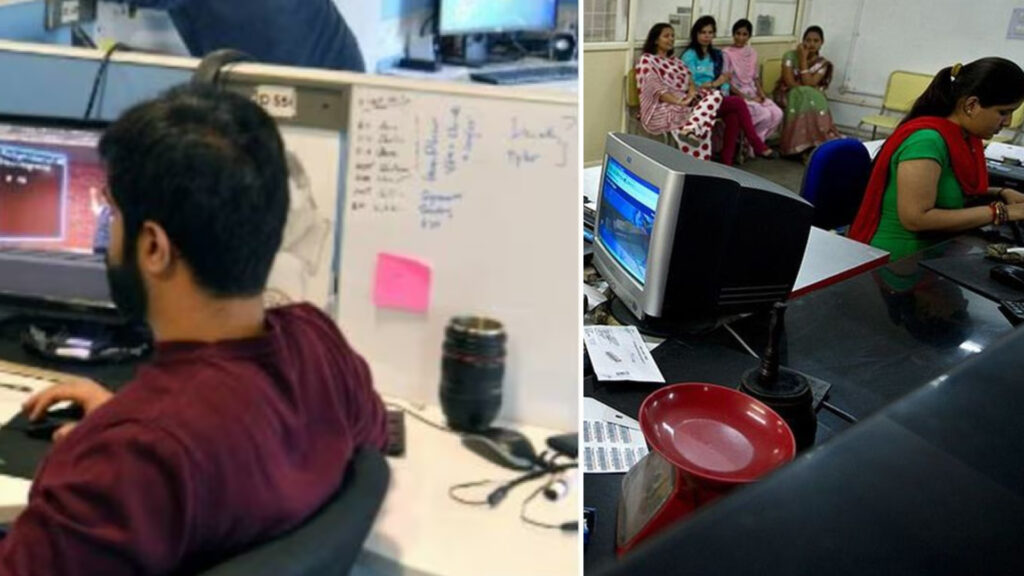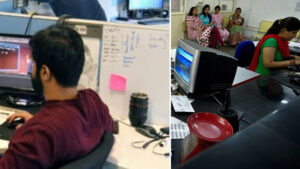How AI is Taking Jobs Away: 7 Shocking Truths Revealed
How AI is taking jobs away has become one of the most discussed and debated topics in today’s workforce landscape. With advancements in artificial intelligence accelerating at a mind-blowing pace, many people experience a mixture of excitement, fear, and uncertainty about the future of employment. But beneath the headlines and media hype lies a nuanced picture that demands deeper exploration.
In this article, we’ll uncover seven shocking truths about how AI taking jobs away is reshaping labor markets worldwide. We will also explore which jobs are most vulnerable, which ones AI can’t replace, and how AI is simultaneously creating new opportunities. This is not just another run-of-the-mill AI jobs article — it’s a well-researched, critical look into the complex human and economic realities behind the AI revolution.
1. How AI Taking Jobs Away Is Real — But Slower Than You Think
It’s easy to fall into panic upon hearing headlines claiming that “AI will replace 70% of jobs within a decade.” However, the reality is far more complex. Goldman Sachs estimates that AI could replace two-thirds of occupations, but the implementation speed varies significantly across industries and job types.
Why the slower pace?
- Technical Limitations: Despite rapid improvements, AI systems still struggle with complex reasoning, creativity, and emotional intelligence.
- Regulatory and Ethical Constraints: Many industries, especially healthcare and legal, impose regulations that slow down AI adoption.
- Organizational Resistance: Businesses tend to adopt new technologies cautiously, balancing cost benefits against human factors and customer perception.
As Nick Clegg, Meta’s former president of global affairs, said in an interview: “In many ways, they’re quite stupid.” Even Sam Altman, OpenAI’s CEO, admits current AI tools are “wildly overhyped.” So, while AI is indeed taking over tasks, wholesale job displacement is a gradual, uneven process.
2. Jobs Most at Risk: 11 Professions AI Is Set to Disrupt
Understanding how AI taking jobs away plays out means knowing which roles are most vulnerable. AI excels at repetitive, structured, and data-heavy tasks. Here are the prime examples:
- Customer Service Representative: Chatbots and virtual assistants handle routine customer queries, reducing demand for human operators.
- Car and Truck Driver: Autonomous vehicles threaten driving roles in logistics, taxi, and rideshare sectors.
- Computer Programmer (Entry-level): Generative AI like ChatGPT can write straightforward code snippets, impacting junior programming jobs.
- Research Analyst: AI analyzes massive datasets to produce insights faster than humans.
- Paralegal: Law firms rely on AI to sift through documents and conduct legal research efficiently.
- Factory or Warehouse Worker: Robots and machine vision systems handle assembly lines and inventory management.
- Financial Trader: Algorithmic trading platforms outpace human traders by analyzing market trends instantly.
- Travel Advisor: AI-powered platforms provide personalized travel recommendations without human intermediaries.
- Content Writer (Basic Tasks): AI generates formulaic emails and social media posts, and drafts articles with minimal human input.
- Graphic Designer: AI tools like DALL-E create professional visuals at the click of a button.
- Data Entry Clerk: Automated systems input and manage vast amounts of data efficiently.
Case in point: McKinsey & Co. estimates that AI could impact 38% of business process and data entry roles, emphasizing the profound effect on blue-collar and routine white-collar jobs.
3. Jobs AI Won’t Replace: The Human Touch Still Matters
On the flip side, many professions remain much safer from AI takeover due to their reliance on empathy, complex judgment, creativity, and ethical reasoning. These roles demand a human touch technology can’t replicate:
- Teachers: Trust-building and classroom dynamics require emotional intelligence beyond AI’s reach.
- Nurses and Healthcare Workers: Compassionate bedside care and sensitive conversations aren’t replaceable by machines.
- Social Workers: Understanding unique human circumstances involves deep empathy and judgment.
- Therapists: Emotional labor and mental health guidance need authentic human connection.
- Tradespeople (Plumbers, Electricians): Manual dexterity and on-the-spot problem-solving are difficult for AI-powered robots.
- Lawyers: Ethical reasoning and advocacy require human discretion.
- HR Specialists: Navigating private employee matters demands sensitivity and nuance.
- Creative Writers and UX Designers: They employ strategic thinking and empathy shaping audience experiences.
- Artists: Innovation in art comes from originality and emotional expression, not just replication.
These professions emphasize the irreplaceable value of human intuition, emotion, and morality.
4. The Surprising Benefits of AI in the Workplace
While fears about how AI taking jobs away are valid, ignoring the benefits AI brings would be shortsighted. Organizations and workers who embrace AI can unlock newfound advantages.
More Focused and Engaging Work
AI automates mundane, repetitive tasks, freeing employees to focus on creative or strategic initiatives. Sean Chou, co-founder of AI startup Catalytic, notes, “Work gets redirected to things that are much more productive.”
Greater Efficiency and Potential for Shorter Workweeks
AI’s productivity boost could shorten work hours, though the implications for wages and benefits remain uncertain. Justin Adams suggests we’re approaching an inflection point where automation will truly reduce workload, not add to it.
Better, Data-Driven Decision-Making
With AI’s ability to mine and interpret vast datasets, teams can make faster, more accurate decisions, minimizing guesswork.
Spurring Innovation and Problem-Solving
AI serves as a creative partner, enhancing problem-solving capacity by handling routine parts and allowing humans to tackle complexity.
Personalized Customer Experiences
AI enables businesses to customize products and services based on user preferences, improving satisfaction and brand loyalty.
5. How AI Is Creating More Jobs Than It Destroys
Contrary to popular belief, AI’s impact isn’t confined to destruction. It’s also a powerful job creator — especially in new, tech-centric roles.
- Prompt Engineers: Specialists who craft precise inputs to optimize AI outputs for chatbots and generative models.
- AI Ethics Specialists: Professionals ensuring AI operates fairly, safely, and aligns with human values.
- Health Tech Implementation Specialists: Experts who help healthcare systems deploy AI-powered tools effectively.
- AI Literacy Trainers: Educators who bridge the skills gap, teaching AI fundamentals and practical applications.
Sean Chou sums it up well: “The number of people necessary to deliver better technology grows massively.” From continual AI training to oversight and maintenance, human labor remains indispensable.
6. How to Prepare for AI’s Impact on Your Career
If you’re wondering how AI taking jobs away affects you personally, the key lies in proactive preparation. Instead of fearing AI, orient yourself toward skills that complement and leverage AI technology.
Upskill in AI-Compatible Areas
- Digital literacy: Familiarize yourself with AI tools related to your industry.
- Critical thinking and problem-solving: Deep analytical ability remains a human strength.
- Emotional intelligence: Cultivate empathy, leadership, and interpersonal skills.
- Adaptability: Embrace lifelong learning to stay ahead of evolving demands.
Consider Cross-Disciplinary Roles
Hybrid skillsets — such as a combination of coding and communication or healthcare knowledge and AI application — are increasingly valuable.
Engage in Retraining Programs
Companies like Amazon illustrate a growing trend of investing in employee reskilling. Participation in these initiatives can make the difference between displacement and career growth.
7. The Societal and Ethical Questions AI Raises
Finally, understanding how AI taking jobs away requires grappling with broader societal implications.
Who Benefits and Who Suffers?
Automation may concentrate wealth and power in the hands of technology owners unless balanced by policy safeguards.
How to Ensure Fair Transition?
- Universal basic income and social safety nets may become critical.
- Inclusive AI governance: Ethical frameworks must steer deployment equitably.
- Collaborative human-AI models: Emphasizing complementary roles over replacement.
Legal and Privacy Concerns
Increasing reliance on AI raises questions about data security, algorithmic bias, and accountability.
Addressing these challenges can help create an AI-enhanced workforce that supports human dignity and opportunity.
You might also like : How to Create a Website with AI for Free Without Coding in 4 Easy Steps
Do Follow : How AI is taking jobs away
Navigating the AI Employment Landscape
The narrative around how AI taking jobs away is not purely dystopian. Yes, some roles will vanish — primarily those centered on repetitive tasks. Yet AI also unlocks new possibilities, creating jobs, enhancing productivity, and reshaping what it means to work in the 21st century.
Our focus should not be on resisting AI but rather on preparing for an evolving workplace where humans and machines collaborate. Embracing lifelong learning, cultivating uniquely human skills, and actively engaging in ethical debates are crucial to thriving amid this transformation.
Remember, AI reflects the intentions and frameworks imposed by its human creators. This is our opportunity to shape its future impact — ensuring AI is a tool for empowerment, not displacement.
Key Takeaways
- How AI taking jobs away is a gradual, uneven process affecting routine jobs more than creative or empathic roles.
- AI is creating new jobs requiring advanced tech, ethical oversight, and training.
- Human skills like empathy, creativity, and critical thinking remain irreplaceable.
- Preparation through upskilling and adaptability is essential in the AI era.
- Society must address ethical and economic issues to ensure a fair future of work with AI.













